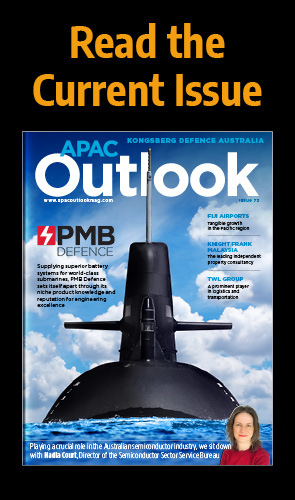On the back of one of the most challenging years in modern history, we examine COVID-19 in Australia and explore the requirements of post-pandemic success.
COVID-19 impacted everyone. But the level of disruption has not been equal.
With a population of around 25 million people, Australia’s government received widespread praise for its handling of the coronavirus and experienced lower infection and death rates compared to many other countries of similar standing.
As of the beginning of June 2021, there have been 30,175 confirmed cases of COVID-19 with 910 deaths, reported by the World Health Organisation (WHO). By comparison, the United Kingdom has had over 4.5 million cases and 127,840 deaths within the same period.
But what have Australia done differently?
The country’s response has been characterised by effective actions, policies and leadership practices which are implemented through strong collaboration between the public and private sectors that are transferable while being repeatable elsewhere.
Australia’s people have played their part, listening to government instructions, and adhering to policies such as lockdown measures, mask wearing and rapid testing. As a result, this led to the effective mitigation of infections, particularly during the early part of the pandemic, as well as containing subsequent outbreaks in the states of Victoria and South Australia.
And what can be learned from such success?
- Act quickly and decisively based on incoming data – Upon becoming a significant threat to Australia in March 2020, the government responded by quickly closing international borders and implementing a mandatory home isolation programme for returning Australian citizens. Police were dispatched to homes to ensure that quarantine requirements were stuck to, while Australia moved quickly to a mandatory hotel quarantine system in which hotel rooms were often guarded by police or military.
- Building trust with citizens – Slowing the spread of COVID-19 meant good hygiene and social distancing practices were vital. Such adherence meant that people had to have faith in the policy prescriptions of government, as well as the data and information underpinning them. The unified response to the pandemic from across the private and public sectors at all levels was hugely significant.
- Adapting and learning – COVID-19 meant fast decision-making but more importantly, constant monitoring and reviewing decisions as the situation evolved and changed. For example, the initial procedure for localised lockdowns by the Australian Health Protection Principal Committee, an established team of the chief health officers from states and territories chaired by the Australian chief medical officer. Early tests of this procedure came with outbreaks in a Tasmanian hospital and an abattoir in Melbourne, followed by the wider outbreak in Victoria. The Victorian government locked down 10 individual suburbs in an effort to stop the spread, enforced by local police with fines. Each instance meant a continuous learning curve in how to control the spread of the disease considering the local context.
- Data-led decision making – In a crisis like COVID-19, there is a plethora of information at companies’ disposal. As such, both Australia’s government and businesses across the country had to respond to an onslaught of new and sometimes contradictory data. Australia took a deliberate data-led approach, harnessing expertise and conducting important work to filter out the noise and focus on vital information to shape their approach.
On the back of COVID-19, the importance of being agile has never been so important. Leaders identify competitiveness and workforce resilience as the key benefits they most want from an ongoing digital transformation. It is also accelerating among a majority of organisations, however, an enhanced focus on transformation is at the expense of customer relationships and partnering opportunities.
According to IBM, its research suggests five key discoveries for the post-pandemic business landscape offering new perspectives on digital transformation, the future of work, transparency, and sustainability.
- Digital transformation was never about the technology
COVID-19 accelerated digital transformation at 59 percent of the companies IBM surveyed, with 66 percent adding that they have been able to complete initiatives where they had previously encountered resistance.
Prior to the pandemic, many organisations didn’t trust their own technological innovation, however, having been left with no choice, many companies have found that they have thrived and are more trusting of new technology. As a result, many are leveraging AI, IoT and blockchain as organisations begin to bounce back from COVID. - The human element is the key to success
IBM’s findings have showcased that over three quarters of Australian executives anticipate changed customer behaviour to continue post-COVID-19. As such, 86 percent of Australian executives confirmed that customer management will be a key priority during the next two years, in comparison to only 35 percent in 2019. - The shift in priorities
Since the start of 2020, executive priorities have shifted and changed considerably. Now, they are focused on internal operational capabilities, which can take attention away from the customer service experience at a time when it could be vital. It is anticipated that 92 percent of Australian executives expect cash-flow and liquidity management to be a priority with about twice as many respondents as two years ago.
At the same time, 91 percent of respondents say cost control will be essential. Cybersecurity concerns have skyrocketed, Australian executives have shown an increased commitment of 72 percent during the next two years, with 47 percent planning to use AI to enhance cybersecurity during the same timeframe. - The post-COVID winner
IBM’s findings have shown that executives anticipated health-related industries to be the most likely post-crisis winners. Telecoms, media and entertainment were also anticipated to show positive impacts, buoyed by stay-at-home orders and habits.
The data also points to greater reliance on platform business models and partner networks, with 69 percent of Australian executives planning significant partnering activity inside their industry and 60 percent looking outside. The expectation is that they predict such participation to grow several hundred percent during the next two years compared to 2019. - Health is the key to sustainability
Before COVID-19, sustainability strategies were largely centred on environmental issues, such as the risks to planetary health from pollution, climate change and similar. Consumers were increasingly choosing products and brands that demonstrated authenticity within these areas, while exuding passion and allegiance.
Despite being faced with a human health crisis, environmental sustainability became joined with issues of personal safety. Consumers have been wearing disposable masks and gloves, opting for more individual packaging than ever. In a bid to protect themselves and their families from the virus, people stopped going face to face shopping, which saw a huge rise in the distribution of delivered goods, meaning a battle between human health and sustainability.
The future of Australia and indeed, the wider world is impossible to predict. With vaccines being rolled out on a global scale, the end to a widely disruptive and hugely challenging two years is on the horizon, however, COVID-19 still remains at large, and people are actively still living alongside the virus. But, by looking to build upon what Australia achieved so well during the beginning of the pandemic, leaders can take inspiration from the country’s overall response and adopt a more resilient approach moving into a post-COVID future.




















